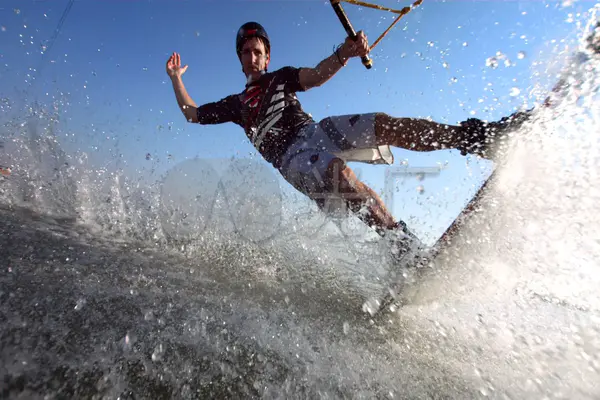Surfing is a sport rich with unique terminology. From terms describing waves to names for different surfing maneuvers, surfers have a language all their own. One term you may come across is “Val.” This article will explore what a Val is in surfing, its origins, and its implications within the surfing community.
Definition of a Val
A Val is a term used in surfing to describe a certain type of surfer. Typically, a Val is an inexperienced surfer who is overly enthusiastic but lacks the skills and etiquette of more seasoned surfers. The term can carry a somewhat negative connotation, suggesting a surfer who is unaware of the unspoken rules of surfing culture.
Origins of the Term Val
The term Val is derived from “Valley,” referring to inland areas far from the ocean. Surfers from these areas are often perceived as not having the same level of experience or respect for the ocean as those who grew up near the coast. The stereotype is that these surfers are less skilled and more likely to make mistakes in the water.
Characteristics of a Val
- Inexperience: Vals are usually new to surfing. They often lack the skills necessary to handle various surfing conditions. This can lead to frustration for both the Val and more experienced surfers around them.
- Overenthusiasm: Vals are often very enthusiastic about surfing. Their excitement can sometimes lead to overconfidence, resulting in poor decision-making in the water.
- Lack of Etiquette: Vals may not be familiar with surfing etiquette. This includes rules about who has the right of way on a wave, how to properly paddle out, and how to avoid collisions.
Common Behaviors of a Val
Dropping In
Dropping in refers to taking off on a wave that another surfer is already riding. This is considered one of the biggest breaches of surfing etiquette. Vals may not be aware of this rule, leading to frustration and potential collisions.
Paddling Out in the Wrong Spot
Vals may not know the best places to paddle out to the lineup. This can lead to them getting in the way of surfers riding waves, causing disruptions and potential accidents.
Overestimating Their Abilities
Vals might attempt waves that are too challenging for their skill level. This can lead to wipeouts, injuries, and a negative experience for themselves and others in the water.
Impact of Vals on Surfing Culture
Frustration Among Experienced Surfers
Vals can cause frustration for more experienced surfers. Their lack of knowledge and etiquette can lead to dangerous situations and disrupt the flow of the lineup.
Teaching Moments
Despite the frustration, Vals can provide teaching moments for experienced surfers. Helping a Val understand the rules and improve their skills can contribute positively to the surfing community.
See Also: What Is a Kook in Surfing Terms
How to Avoid Being a Val
- Take Lessons: One of the best ways to avoid being a Val is to take surfing lessons. Professional instruction can help you learn the basics of surfing and understand important safety and etiquette rules.
- Observe and Learn: Spend time observing more experienced surfers. Watch how they paddle out, take off on waves, and interact with others in the lineup.
- Practice Patience: Be patient with your progress. Surfing is a challenging sport that takes time to master. Don’t rush into waves that are beyond your skill level.
- Learn Surfing Etiquette: Familiarize yourself with surfing etiquette. Understanding the unspoken rules of the lineup will help you avoid conflicts and earn respect from other surfers.
Improving as a Surfer
- Consistent Practice: Regular practice is key to improving your surfing skills. The more time you spend in the water, the more comfortable you will become with different conditions and wave types.
- Physical Fitness: Maintaining good physical fitness can enhance your surfing performance. Strength, flexibility, and cardiovascular fitness are all important aspects of a good surfer’s physical condition.
- Mental Preparation: Mental preparation is also crucial. Visualization, focus, and a positive attitude can help you overcome challenges and improve your surfing experience.
Conclusion
Being called a Val in surfing isn’t the end of the world. It’s a term that highlights the need for improvement and awareness in the water. By taking the time to learn and respect the culture of surfing, you can move beyond the label of Val and become a respected member of the surfing community. Remember, everyone starts somewhere, and with dedication and respect, you can become a skilled and knowledgeable surfer.
FAQ: What is a Val in Surfing?
Q: What is a val in surfing?
A: A val in surfing refers to the movement or action of a surfer leaning back on their board while riding a wave, using their back foot to control and maneuver the board. It is also known as “carving” or “cutting back.”
Q: Why do surfers perform vals?
A: Surfers perform vals to maintain speed and control on the wave, as well as to change direction and perform tricks or turns.
Q: How do you execute a proper val?
A: To execute a proper val, the surfer needs to have good balance and control over their board. They should lean back slightly, with their weight on their back foot, and use their back foot to carve the board across the face of the wave.
Q: Is performing a val difficult?
A: Performing a val can be difficult, especially for beginners. It requires good balance, timing, and control over the board. However, with practice and experience, most surfers are able to master the technique.
Q: Are there any risks associated with performing a val?
A: Like any other surfing maneuver, there are risks associated with performing a val. If not executed properly, the surfer may fall off the board or lose control, leading to potential injuries. It is important to always wear a leash and surf within one’s abilities.

